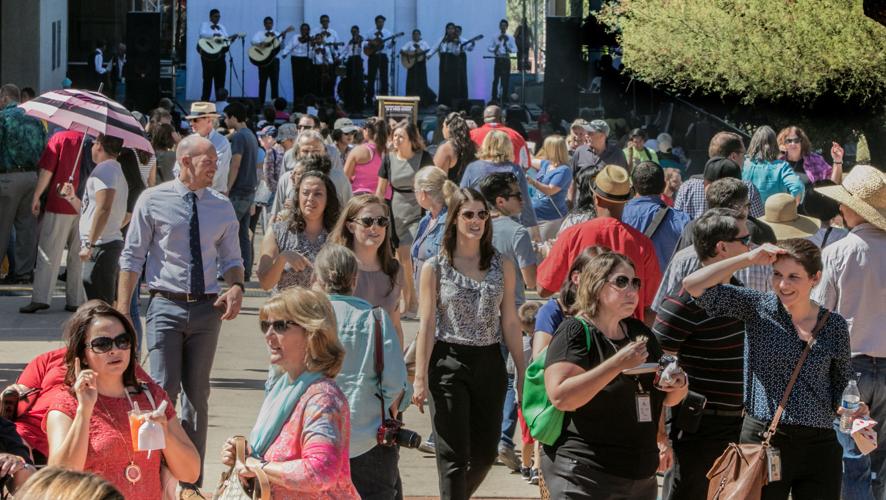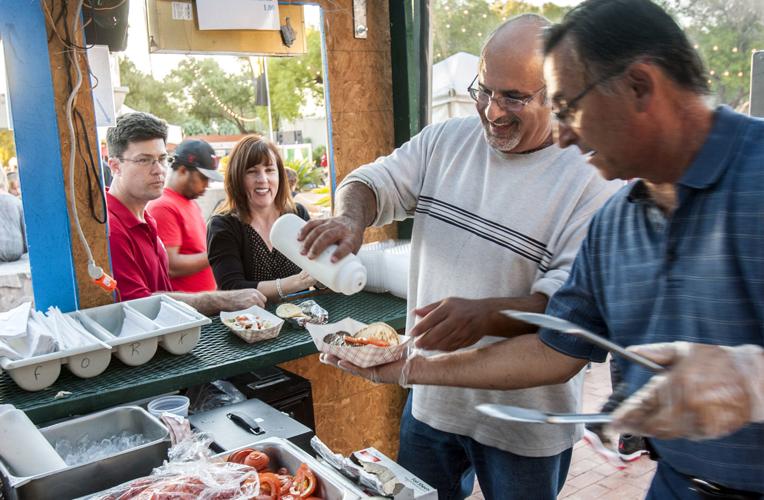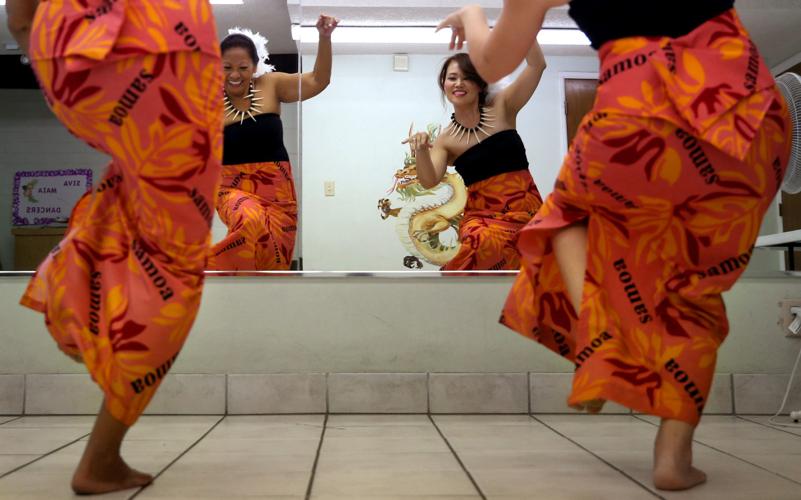Fall means a few things: Cooler weather, pumpkin-flavored everything, haunted houses, and pumpkin patches.
But in Tucson, fall means Tucson Meet Yourself.
Never heard of Tucson Meet Yourself? You’re in for a treat ... literally.
WHAT IS IT?
Tucson Meet Yourself is an annual festival that takes over downtown Tucson for three days, this year it’s Friday, Oct. 12, through Sunday, Oct. 14.
It’s everything you could ever ask for in a festival — dazzling performances, unique art vendors, and food you can’t get elsewhere.
But the festival is more than the Caribbean soul food, Iraqi violin music, Filipino dance teams, and Turkish jewelry-makers.
“It’s a party of many cultures, with all the flavors, colors, and personalities that yields,” said Kimi Eisele, the festival’s communications director. “I would also describe it as a place where you get to sit next to, listen to, and learn from people who have different cultural backgrounds than you.”
Eisele calls Tucson Meet Yourself an “educational experience that happens by a celebration.”
HISTORY
The festival has been growing since 1974 and has evolved to be one Tucson’s biggest events.
Tucson Meet Yourself was founded by folklorist Jim Griffith, his wife Loma Griffith, and friends.
In an interview with the Star last year, Festival Folklorist Maribel Alvarez said the festival was inspired by the two-week-long Smithsonian Folklife Festival, which began in the 1960s.
Griffith had experienced many cultures in Southern Arizona which sparked the idea to create a festival surrounding all of them, said Eisele.
Tucson Meet Yourself now welcomes more than 120,000 people — so many that the event outgrew its original location in El Presidio Park, the civic plaza. This year’s event was moved out of the plaza and will take over four blocks of downtown Tucson.
WHAT’S THERE TO DO?
Here’s a better question: What’s there not to do?
Let’s start with the performances — there’s more than 100 of them. You’ll see everything from Afro-Brazilian martial arts to a Colombian dance group to Korean drumming.
There’s Japanese archery, Mediterranean acoustic music, circus performers, and bluegrass bands. And the list goes on.
Beyond the performances, there are cooking demonstrations, car shows, films to watch, and art vendors showcasing jewelry, photography, calligraphy, origami, pottery, painting, and more.
The 50-plus food vendors slated to be at the festival are truly enough to make your heart sing. Beyond the normal fair foods, the festival includes cuisine from dozens of different countries.
“Within a span of 15 minutes as I walk over the grounds, I can hear music from all over the world and taste five different kinds of food and see people who I wouldn’t normally see sitting next to each other on a bench,” Eisele says. “That’s what moves me the most.”
Photos: Tucson Meet Yourself 2017
Tucson Meet Yourself
Updated
Dancers with Tucson's Compania de Danza Folklorica de Arizona perform on the Alameda St. stage during opening day of the 44th edition of Tucson Meet Yourself in Tucson, AZ. on October 13, 2017.
Tucson Meet Yourself
Updated
Helpers and staff of Tucson's Cafe Santa Rosa keep super busy making Indian Fry Bread.
Tucson Meet Yourself
Updated
Hundreds of people turned for opening day.
Tucson Meet Yourself
Updated
Lines cue up early for refreshing Raspados.
Tucson Meet Yourself
Updated
Arslan Redzepovic, with Chef Alisah's Restaurant serves up some chicken for a customer.
Tucson Meet Yourself
Updated
Plenty of folks were eating on the run during lunchtime.
Tucson Meet Yourself
Updated
Chickens roast around lunchtime.
Tucson Meet Yourself
Updated
Robert Rosas and son Bubba, 2, discuss lunch choices.
Tucson Meet Yourself
Updated
Michelle Saavedra and Carrie Fairchild, l-r, contemplate their choices of something new for lunch.
Tucson Meet Yourself
Updated
The festival is a good opportunity to catch up with friends.
Tucson Meet Yourself
Updated
Diego Rico is thrilled with his Agua Frescas drink as his family awaits their orders.
Tucson Meet Yourself
Updated
Ceramic artist Abdulla Mohammed paints on a tile.
Tucson Meet Yourself
Updated
Ceramic artist Abdulla Mohammed paints on a tile for a gift with his hand-painted plates and bowls for sale nearby.
Tucson Meet Yourself
Updated
Ocotillo Rain & Thunder provide some bluegrass entertainment.
Tucson Meet Yourself
Updated
Eva Peres, center, discusses some of her Oaxacan dresses with customer Georgia Armstrong who buys one every year.
Tucson Meet Yourself
Updated
Maps make it easy to get around.






